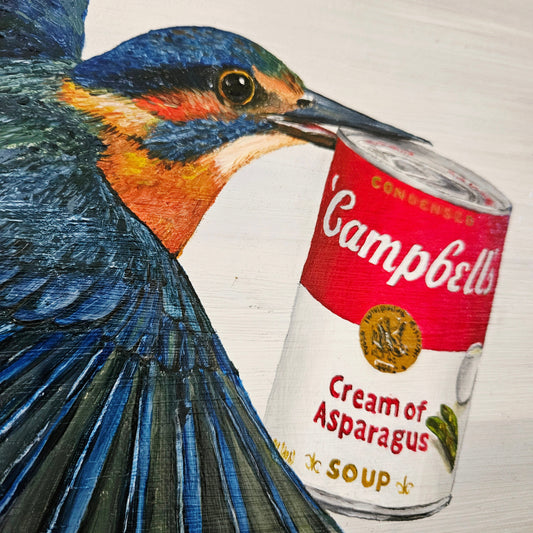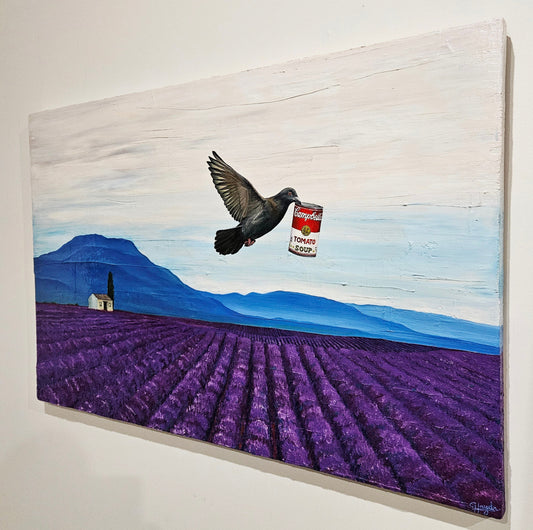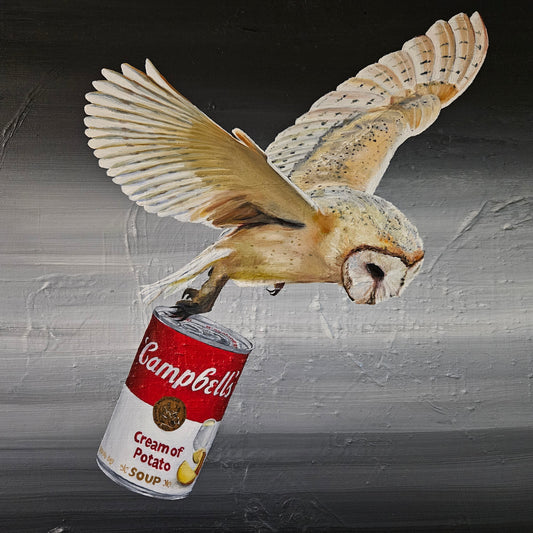Andy Warhol’s Enduring Influence: A Deep Dive into His Most Iconic Works

Andy Warhol’s Art and Influence: Exploring His Most Iconic Works
Discover the art and legacy of Andy Warhol, from Campbell’s Soup Cans to Marilyn Monroe. Explore how his work changed the landscape of contemporary art.
The Warhol Effect: Understanding the Art and Legacy of Andy Warhol
Andy Warhol is more than a household name; he is a symbol of a seismic shift in the world of modern art. Blurring the line between celebrity and artist, commercialism and creativity, surface and depth, Warhol emerged in the mid-20th century as a leading figure of the Pop Art movement. His work, though often visually simple, carries layers of meaning, critique, and cultural resonance that remain powerful today.
Best known for his Campbell’s Soup Cans, Marilyn Monroe portraits, and Brillo Boxes, Warhol transformed everyday imagery into artistic icons, reflecting the consumerist obsessions of post-war America. Yet, to confine his influence to commercial aesthetics would be to miss the philosophical undercurrents and sociopolitical commentary embedded in his oeuvre.
Let's take a closer look at Andy Warhol’s most famous artworks, his approach to art-making, and how he became both a mirror and a manipulator of 20th-century culture.
Early Life and Artistic Origins
Born Andrew Warhola in Pittsburgh, Pennsylvania, in 1928, Warhol was the son of Slovakian immigrants. As a child, he suffered from Sydenham’s chorea, a rare neurological disorder, which kept him bedridden for long stretches. During those early years, he developed a fascination with celebrity culture, magazines, and illustration, all of which would later inform his artistic practice.
Warhol studied commercial art at Carnegie Institute of Technology (now Carnegie Mellon University), graduating in 1949. He moved to New York City and quickly found success as a commercial illustrator, contributing to major publications like Vogue, Harper’s Bazaar, and The New Yorker. His unique combination of whimsy and commercial flair laid the groundwork for his eventual leap into fine art.
The Rise of Pop Art
By the late 1950s and early 1960s, Warhol began shifting from commercial work to more personal and experimental art. It was during this time that Pop Art emerged as a significant movement, reacting against the perceived elitism of Abstract Expressionism and embracing the imagery of mass media, advertising, and consumer goods.
Warhol found his perfect canvas in this space. His early Pop Art pieces blurred the distinction between art and commodity, drawing attention to the everyday objects people saw but rarely contemplated, such as soup cans, soda bottles, and celebrities.
He once said, “I just happen to like ordinary things. When I paint them, I don’t try to make them extraordinary. I just try to paint them ordinarily.” That deceptively simple philosophy became a radical act.
Campbell’s Soup Cans (1962)
Arguably Warhol’s most iconic work, the Campbell’s Soup Cans series consists of 32 paintings, each depicting a different flavour of soup. First exhibited at the Ferus Gallery in Los Angeles, the series caused a stir. It was art that resembled supermarket packaging, flat, clean, and repetitive.
Critics didn’t know whether to take it seriously. That was Warhol’s point. He presented art that mimicked mass production, undermining the notion that fine art had to be original, expressive, or labour-intensive. He deliberately removed the “artist’s touch” by using silkscreen printing, an industrial method that allowed for mechanical reproduction.
The soup cans were more than quirky pop culture references. They became visual emblems of post-war consumerism, uniformity, and a sense of nostalgia. Warhol had once eaten Campbell’s soup every day for lunch, and suddenly, his lunch became a gallery artefact.
Marilyn Diptych (1962)
Another key work in Warhol’s canon is the Marilyn Diptych, produced just weeks after the death of Marilyn Monroe. Composed of 50 images split into colour and black-and-white halves, the piece reflects both the manufactured glamour and the tragic decay of celebrity culture.
By repeating Monroe’s face, taken from a publicity still from Niagara, Warhol transforms her into a commodified icon, no different from a can of soup. Yet, the gradual fading and distortion of her image in the right-hand panels evoke a loss of identity, a fading memory, a death masked by performance.
Warhol returned to the Marilyn image repeatedly, creating dozens of silkscreen variations in different colours and scales. Each one was both a homage and a commentary, celebrating her beauty while mourning her objectification.
Elvis, Mao, and More
Warhol’s fascination with fame extended to other public figures, including Elvis Presley, Elizabeth Taylor, Jacqueline Kennedy, and Mao Zedong.
In his Elvis series, Warhol depicted the King of Rock and Roll as a gunslinging cowboy, blurring the boundaries between celebrity and role-playing. In Mao, he transformed the Chinese leader’s official portrait into a psychedelic icon, critiquing the commodification of political power in a capitalist art world.
These portraits followed the same method, silkscreen printing, garish colours, repeated forms, creating a visual language of fame, replication, and detachment.
The Factory and Collaborative Process
By the mid-1960s, Warhol had established The Factory, his Manhattan studio that became a hub for artists, musicians, socialites, and misfits. It was more than a studio — it was a social experiment, a living artwork.
Here, Warhol produced films (Sleep, Empire, Chelsea Girls), hosted happenings, and created countless screen prints. The Factory’s open, collaborative ethos foreshadowed the idea of art collectives and influencer culture.
He often delegated the physical making of his works to assistants, challenging the Romantic ideal of the lone genius artist. Some saw this as lazy or cynical. Others viewed it as visionary, a precursor to how we now understand branding, authorship, and art as a process rather than a product.
Death and Disaster Series
In contrast to his colourful celebrity portraits, Warhol’s Death and Disaster series, also begun in 1962, explored the darker side of media saturation. Using newspaper photographs and newswire images, he silkscreened scenes of car crashes, suicides, electric chairs, and race riots.
The repetition of these violent images served as a commentary on how media desensitises the public to real human suffering. By treating tragedy the same way he treated soup and movie stars, Warhol highlighted the disturbing equivalence imposed by media representation.
This body of work reveals the philosophical depth beneath Warhol’s shiny surfaces. His art wasn’t just about celebrity; it was about systems, mechanisms, and how we perceive reality through mediation.
Business Art and the Embrace of Capitalism
Unlike many artists of his time, Warhol never shied away from money or success. He openly embraced capitalism, stating, “Making money is art and working is art and good business is the best art.”
He turned himself into a brand long before that became a marketing buzzword. His silver wigs, dark sunglasses, and deadpan speech made him instantly recognisable. He even produced a magazine (Interview), managed the band The Velvet Underground, and created TV specials.
This full-scale immersion into commerce wasn’t selling out; it was the artwork itself. Warhol blurred the lines between artist and entrepreneur, suggesting that both roles could coexist, even complement each other.
Later Years and Legacy
In the 1970s and 1980s, Warhol’s output expanded even further. He collaborated with rising stars like Jean-Michel Basquiat and Keith Haring, bringing Pop Art into conversation with graffiti, hip-hop, and street culture.
His portraits of politicians, royalty, and rock stars continued, as did his exploration of abstraction in works like the Oxidation Paintings, which incorporated urine on metal surfaces, a deliberately provocative response to Abstract Expressionism.
Warhol died unexpectedly in 1987 after complications from gallbladder surgery. At the time, some critics had dismissed him as superficial or out of touch. However, in the decades since, his influence has continued to grow.
From advertising and branding to Instagram filters and TikTok fame, our culture now bears an uncanny resemblance to a Warhol screenprint, fragmented, familiar, and infinitely reproducible.
Warhol in the Contemporary Art World
Today, Andy Warhol’s works are held in major museums worldwide, from the Museum of Modern Art in New York to the Tate Modern in London. His foundation supports contemporary artists, and his market value remains sky-high.
But his true legacy lies in how he shifted the lens through which we view art, culture, and ourselves. He democratised image-making, challenged notions of originality, and paved the way for the selfie age, influencer culture, and postmodern identity politics.
Warhol didn’t just paint Campbell’s soup; he foresaw a world where everything, including ourselves, could be branded, duplicated, and sold.
Final Reflections
Andy Warhol’s art is often misunderstood as shallow, commercial, or merely decorative. In reality, it is razor-sharp in its critique, prophetic in its perspective, and revolutionary in its method.
He held up a mirror to modern life, reflecting our obsessions, idols, and illusions. Through repetition and surface, he uncovered profound truths about fame, death, identity, and consumption.
Whether through the glimmering face of Marilyn Monroe or the stark stillness of a soup can, Warhol asked us to look again, and to question what we see.
As we continue to live in a world saturated with images and driven by spectacle, the relevance of Andy Warhol only intensifies. He wasn’t just part of the Pop Art movement. He was the movement. And in many ways, he still is.








